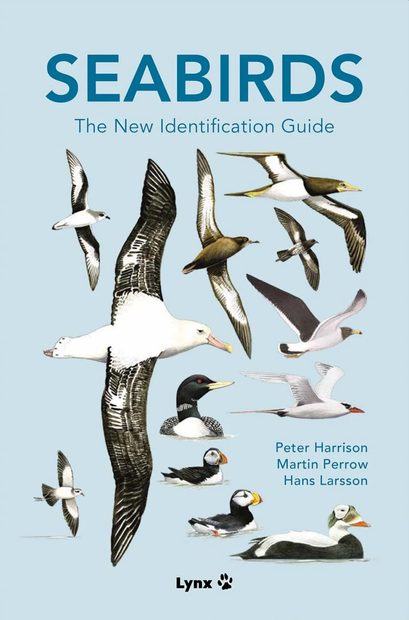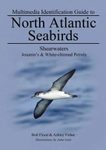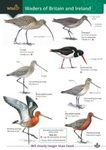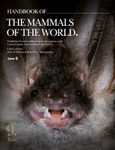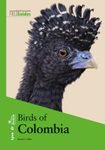By
Gehan de Silva Wijeyeratne
27 Dec 2022
Written for Hardback
Nearly forty years on from the original publication, the new seabird identification guide is a vastly improved offering bringing together many of the advances in field identification. However impressive the book is, the authors also point out that this book is only another new beginning. It is not the last word on seabirds as even details as basic as species delimitations are still to be resolved using a combination of traditional morphometrics as well as new technologies such as molecular phylogenetics and acoustic analysis. I am glad that this book follows a series of important seabird books by Klaus Malling Olsen and Steve Howell
et al. (including the fairly recent
Oceanic Birds of the World: A Photo Guide published Princeton University Press in 2019). It makes it easier that taxonomic decisions, suggestions and discussions in previous books are already factored into this book. But seabird taxonomy remains in flux.
The book is structured with maps on the inside and outside back covers showing all of the world’s oceans and a numbered list of 117 islands, essential for following the text on distribution in the book. Maps are found again in the section ‘Where in the world?’ (pages 24-27) where the islands are labelled with names (as opposed to numbers) in four maps covering the Atlantic, Indian, Western and Eastern Pacific regions. The introduction contains a brief but useful introduction to the groups covered (pages 11-15). These are in taxonomic order with families in capital letters. There are a few exceptions to the family in capitals rule, such as the skimmers, gulls and terns being treated with capital letters although in the same family Laridae. But they are sufficiently distinctive to merit a high-level division for field guide purposes although not necessarily conforming to strict taxonomic divisions. Further divisions within a family (e.g. Gadfly Petrels, Procellaria Petrels) are in lowercase. The plates are cross-referenced and this section serves also as a quick guide to the systematic accounts and plates. 17 Families are covered in this book from seaducks, grebes and sheathbills to gannets, cormorants and pelicans. The introduction lists the number of species and genera in that group. A section on ‘The basics of seabird ID’ covers topics such as jizz and moult. Two pages of glossary are followed by a page on detailed seabird topography. Finally, there are three pages of ‘Species inventory’ which serves as a detailed index to the plates and pages. The bulk of the book is taken by the species accounts in the ‘systematic accounts’ (pages 31 - 571). The end sections have a fairly extensive ‘References’ spanning 21 pages (pages 573-594) followed by an index referencing common and Latin names (pages 595-600).
The systematic accounts are preceded by more detailed text on the ‘group’ being covered with a good summary of the present thinking based on molecular phylogenetic analyses. At times a phylogenetic tree may be shown. There is an overview of the typical field characters and behaviour and what to look out for in separating out the species. The ‘group’ could be an entire family or a cluster of related genera. For example, the ‘shearwaters’ receive four pages of introduction (pages 442 – 445) when they follow on from the Procellaria petrels. A lot of trouble has been taken to set the scene for the various groups and underlines why this book will be such an important work of reference. The systematic accounts (the whole double-page composite being referred to as plates) follow the modern field guide format with text and distribution maps on the left facing the artwork on the right. The plates are heavily annotated with key identification notes in the format that has become well-established for advanced identification guides.
The heavily annotated illustrations which allows the ‘plates to be read’ are one of the obvious departures from the ‘old Harrison’. But another key difference is the vast number of illustrations to illustrate the different plumages across the ageing cycle. Subspecies which generally have only subtle differences are covered in the text and not illustrated (with a few exceptions). On average two species are covered in a double-page spread. Gulls which take three to four years to reach maturity receive a full page. Some species such as the Lesser Black-backed Gull
Larus fuscus receives two double pages which is helpful as it is an important baseline species for benchmarking identification characters. To reiterate there is plenty in this book even for urban birders who are studying gull flocks in cities to pick out rarities. The plates are illustrated by Peter Harrison other than those painted by Hans Larsson for all of the seaducks, skimmers, gulls, terns and skuas. The two artists are sufficiently different that most people will recognise the hand of the two artists on the plates. Although a taxonomic order is broadly followed, at the level of species, similar species are illustrated close to each other to serve field ID rather than to follow a strict phylogenetic arrangement. Another difference between the ‘old Harrison’ and ‘new Harrison’ is the number of species covered. Harrison in his preface comments that the number of tubenoses has increased from 107 to over 170, mainly due to subspecies being elevated to full species status.
Each plate (a double-page spread) has at the top a taxonomic discussion to set the scene and flags any new splits which may or may not have been covered in the book. A good example being Plate 88 on the Caspian
Hydroprogne caspia and Royal Tern
Thalasseus maximus which draw attention to the split of West African Crested Tern
Thalasseus albididorsalis. These setting-the-scene notes are especially helpful with many of the petrel complexes where the taxonomy remains in flux. The species accounts follow a standard formula with common names in English, German and Spanish followed by text on distribution. The worldwide distribution of a species is also marked on a colour-coded map. The rest of the text is on identification in both the ‘Identification’ section and the ‘Confusion species’ section’. Vocalisations are included in the ‘Identification’ section. The plates are richly illustrated and an extreme example is Parasitic Jaeger
Stercorarius parasiticus which is one of the species which receives a double-page spread. It is illustrated with 26 birds drawn on a page. The ‘new Harrsion’ does not render any of the stand-alone gull books which have come out in the last few years redundant. They each have their strengths. But if you could only have one specialist seabird book or wanted one book as the first reference you turn to, this might be the book.





